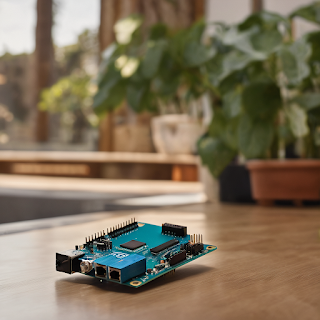Arduino Deep Learning
Certainly! If you're writing a blog about Arduino and want to provide in-depth information, here's a structure and some key points to cover:
Exploring the Depths of Arduino: A Comprehensive Guide
**Introduction**
- Briefly introduce Arduino as an open-source electronics platform.
- Mention its versatility and widespread use in various projects.
What is Arduino?
Explain the origin and history of Arduino.
Describe the basic components of an Arduino board.
Highlight the open-source nature of Arduino and its extensive community support.
**Chapter 1: Arduino Basics**
- Explain what Arduino is and its history.
- Discuss the different Arduino boards (Uno, Mega, Nano, etc.) and their specifications.
- Describe the Arduino IDE (Integrated Development Environment) and how to set it up.
- Provide an example of a simple "Hello World" program on Arduino.
**Chapter 2: Programming Arduino**
- Cover the basics of the Arduino programming language, which is based on C/C++.
- Explain the structure of an Arduino sketch (setup and loop functions).
- Detail how to upload code to an Arduino board.
- Provide examples of common programming tasks, like digital and analog I/O, control structures, and functions.
**Chapter 3: Electronics with Arduino**
- Introduce the essential electronic components often used with Arduino (LEDs, resistors, sensors, etc.).
- Explain how to connect these components to an Arduino board.
- Provide code examples for working with LEDs and sensors.
- Discuss safety precautions when working with electronics.
**Chapter 4: Communication and Connectivity**
- Explain how to establish serial communication between an Arduino and a computer.
- Discuss the use of libraries and example projects for Bluetooth, Wi-Fi, and other wireless communication.
- Show how to use Arduino in IoT (Internet of Things) projects.
- Highlight the potential for remote control and data exchange with other devices.
**Chapter 5: Advanced Projects**
- Showcase a variety of complex projects that can be achieved with Arduino, such as robotics, home automation, and data logging.
- Provide detailed explanations of the components and code required for each project.
- Discuss best practices for project planning and execution.
**Chapter 6: Troubleshooting and Debugging**
- Offer guidance on common issues and how to resolve them.
- Explain how to read and interpret error messages in the Arduino IDE.
- Provide tips for efficient debugging and testing.
**Chapter 7: Expanding Arduino with Shields and Modules**
- Discuss the use of expansion shields and modules to extend Arduino's capabilities.
- Provide examples of popular shields (e.g., motor shields, display shields) and modules (e.g., GPS, RFID).
- Explain how to use and stack multiple shields when necessary.
**Chapter 8: Resources and Communities**
- List useful online resources, forums, and communities for Arduino enthusiasts.
- Mention recommended books, tutorials, and courses for further learning.

Comments
Post a Comment